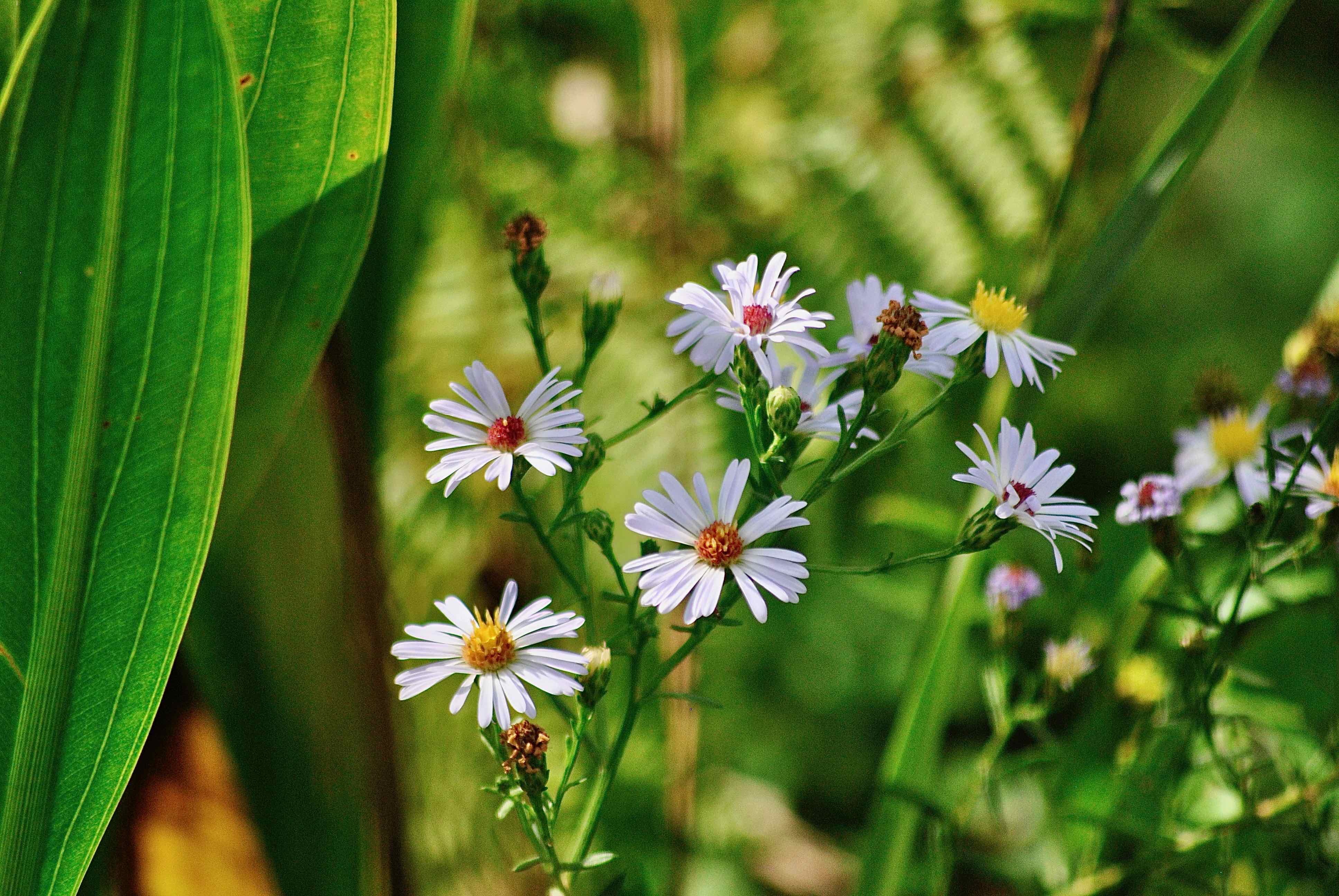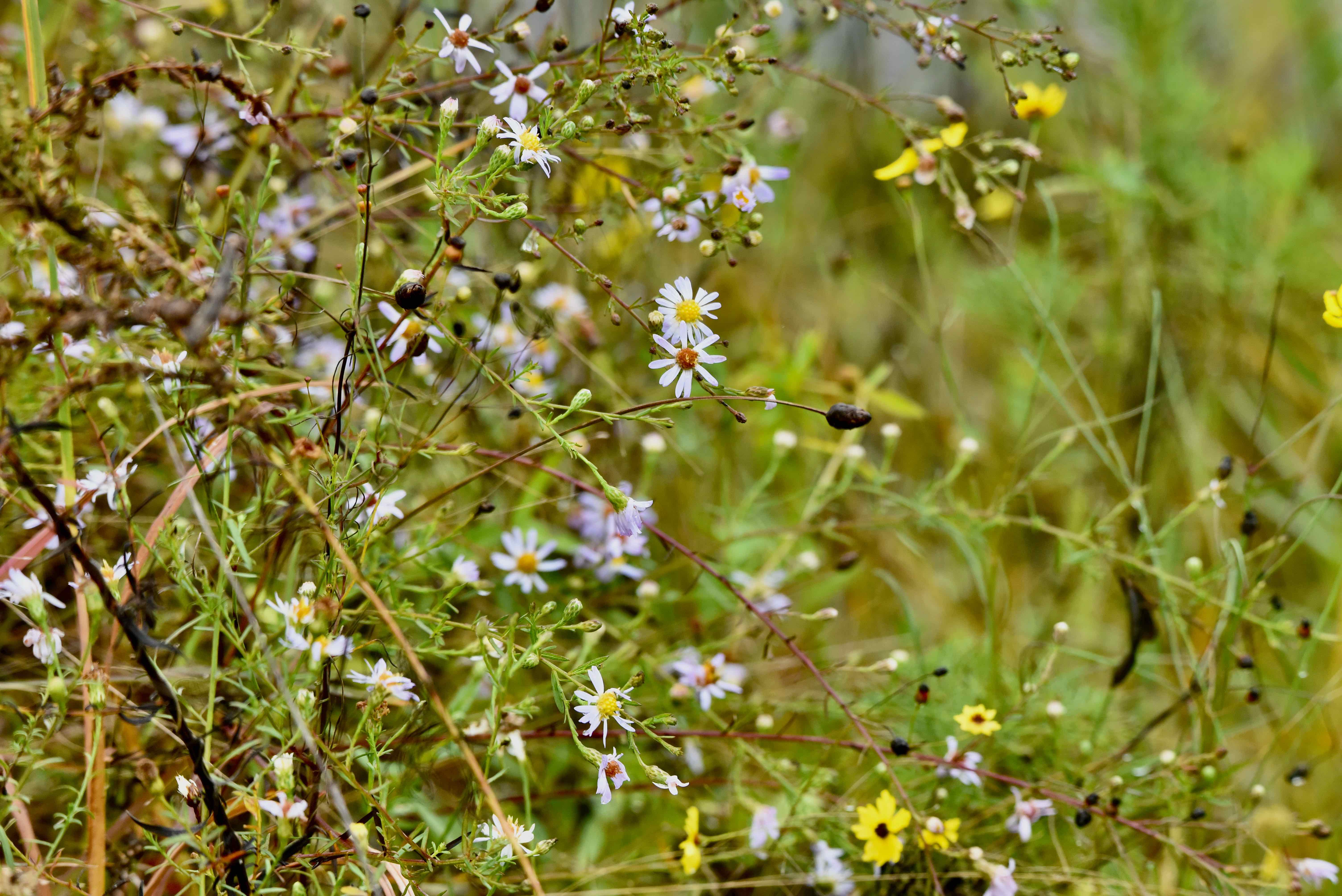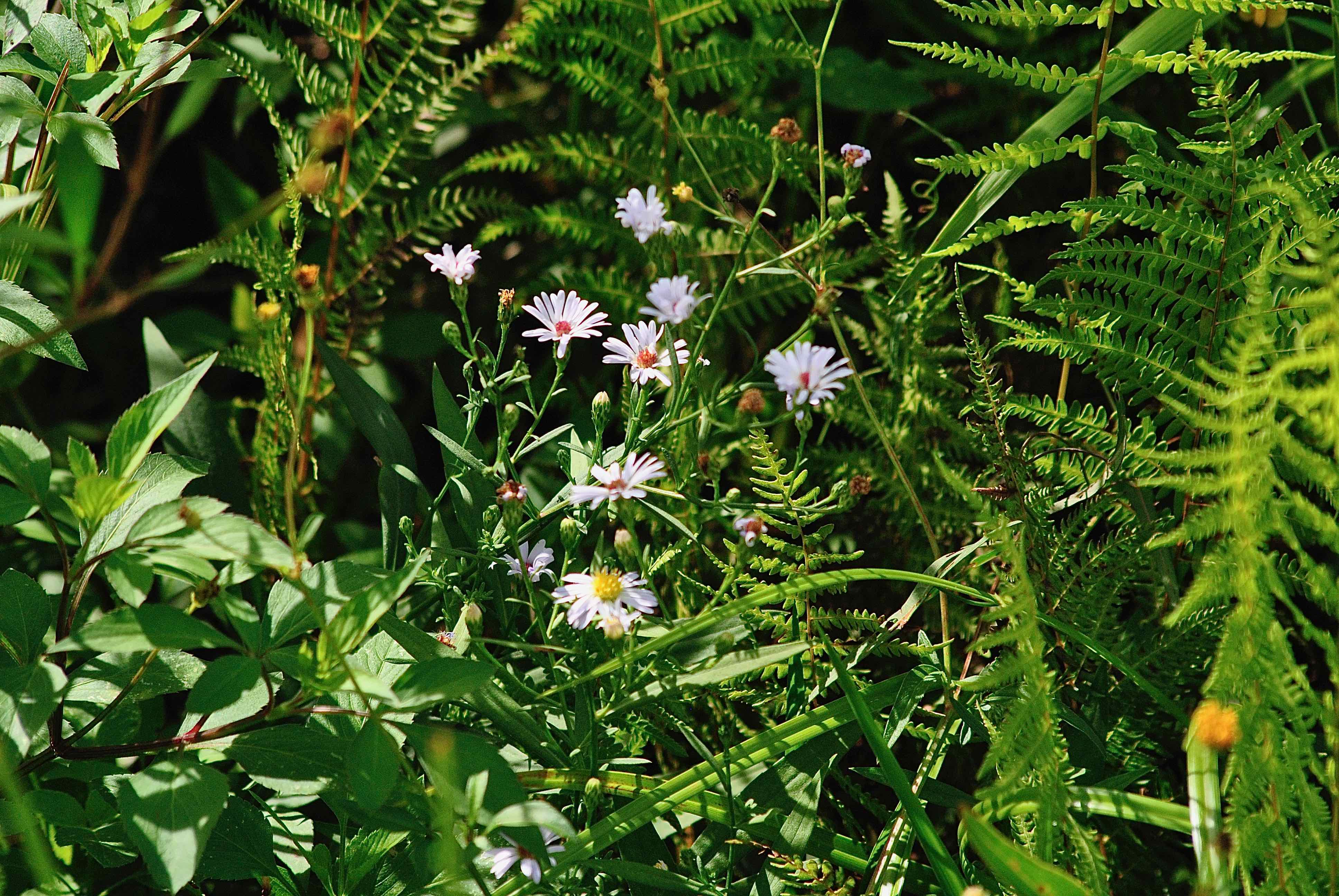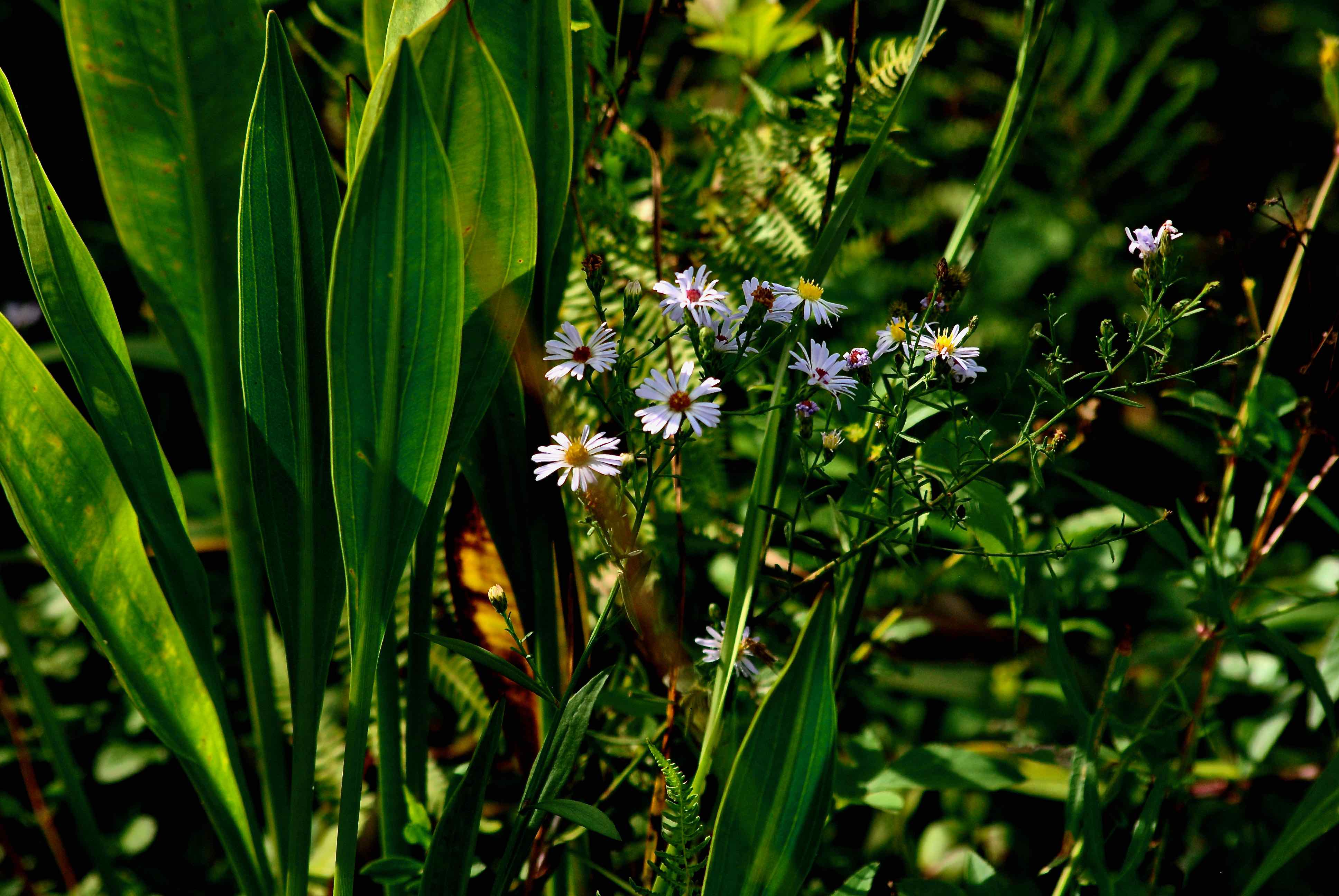
Rice button aster, photographed at Loxahatchee National Wildlife Refuge, Boynton Beach, Palm Beach County, in November 2015.
Rice button aster, Symphyotrichum dumosum, is the wildflower equivalent of the proverbial girl next door — bright, cheery and familiar, simple in its beauty. We recognize it instantly even if we don't know its name.
It's the most common and widespread aster native to Florida, found in all but three counties: Baker, Dixie and Lafayette. Its range extends over most of the eastern United States into parts of Canada, westward into the Mississippi valley, Texas and Oklahoma. It's also found on the island of Hispaniola. One reason why rice button aster is so ubiquitous is its adaptability. It prefers moist to west soils, but it will grow in drier places. It doesn't need rich soil, nor does it need full sun. And it is drought tolerant, once it is established.
It has an herbaceous stem, meaning it's not woody. It can be erect or sprawling, typically two to three feet tall but it can reach four under ideal circumstances. It has small, narrow leaves with a prominent center vein; they're simple and grow alternately along the stem, with smooth or slightly toothed edges. However, rice button aster's looks can vary greatly, so much so that some scientists have tried to divide it into subspecies, but the general consensus is that it's just one.
Rice button aster is a perennial, but in winter, it goes dormant, emerging again as a dense rosette of leaves on the ground when warm weather returns. In South Florida, blooms will begin to appear in spring and continue into the fall. In colder climates, rice button aster blooms in summer, continuing deep into the fall. It's an important source of nectar for bees and other pollinators before the approaching winter because it will be in bloom long after other wildflowers are gone.
The flowers are large and range in color from white to lavender and have center discs that vary from orange to brown to yellow. They bloom at the terminal end of branches. The seeds are fluffy tufts that get dispersed by the wind.
Rice button aster usually grows in dense colonies; it sends out new shoots via rhizomes, or underground stems. It can grown in wildflower gardens, but it does have a propensity to spread and needs to be kept under control.
Wild turkeys are known to eat the seeds; both deer and rabbits will browse on the the vegetation. And the pearl crescent butterfly uses rice button aster as a host plant for its offspring. We humans haven't much use for it apparently except as a garden plant and perhaps for cut flowers. We did read that the Tewa people of New Mexico ate rice button aster's fruit, although the lands the Tewa inhabitated are a bit west of the plant's native range.
As we said, this is the most common and widespread aster native to Florida. However, the Institute for Regional Conservation considers rice button aster to be critically imperiled in the Florida Keys.
Rice button aster is a member of Asteraceae, the sunflower family. Other common names include bushy aster, wild aster and long-stalked aster.
Click on photo for larger image
Links for Rice Button Aster



